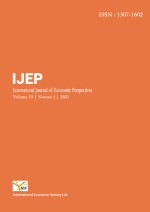Make-or-buy analysis with TCT and RBV assumptions evidence from Algerian hotel firms
Keywords:
Make-or-buy decision, Transaction Cost Theory (TCT), Resource-Based View (RBV), hotel industry, Algeria, outsourcingAbstract
This study examines the make-or-buy decisions in Algerian hotel firms by integrating the theoretical perspectives of Transaction Cost Theory (TCT) and Resource-Based View (RBV). Using qualitative data from semi-structured interviews with 16 managers of four- and five-star hotels in western Algeria, the research analyzes how firms determine whether to internalize or outsource key services. The findings indicate that whle TCT serves as the primary explanatory framework—emphasizing cost, risk, and institutional inefficiencies—RBV plays a complementary yet significant role, particularly in decisions involving core capabilities and customer experience. Contextual constraints, such as unreliable suppliers, rigid public procurement regulations, and limited strategic resources, often limit managerial flexibility. The study introduces the concept of bounded strategic rationality to better explain decision-making in emerging service markets and proposes a contextualized integration of TCT and RBV. Although limited by its qualitative scope and regional focus, the research provides practical insights for hotel managers seeking to optimize sourcing strategies under institutional constraints, as well as for policymakers aiming to reform procurement frameworks. Additionally, it lays a conceptual foundation for future studies.
References
Barney, J. B. (1999). How a firm’s capabilities affect boundary decisions. Sloan Management Review, 40(3), 137–145.
Braun, V., & Clarke, V. (2006). Using thematic analysis in psychology. Qualitative Research in Psychology, 3(2), 77–101.
Brinkmann, S., & Kvale, S. (2015). Interviews: Learning the craft of qualitative research interviewing (3rd ed.). Sage Publications.
Coase, R. H. (1937). The nature of the firm. Economica, 4(16), 386–405.
Creswell, J. W. (2014). Research design: Qualitative, quantitative, and mixed methods approaches (4th ed.). Sage Publications.
Espino-Rodríguez, T. F., & Lai, P. C. (2014). Activity outsourcing and competitive strategy in the hotel industry. International Journal of Hospitality Management, 42, 9–19.
Espino-Rodríguez, T. F., & Padrón-Robaina, V. (2005). A resource-based view of outsourcing and its implications for organizational performance: Empirical evidence from hotel companies. International Journal of Hospitality Management, 24(3), 287–306.
Grant, R. M. (1991). The resource-based theory of competitive advantage: Implications for strategy formulation. California Management Review, 33(3), 114–135.
Hamel, G., & Prahalad, C. K. (1990). The core competence of the corporation. Harvard Business Review, 68(3), 79–91.
Hiamey, S. E., & Amenumey, E. K. (2013). Exploring the management of support services outsourcing in the hotel sector: Evidence from Ghana. Tourism Management Perspectives, 6, 43–50.
Lacity, M. C., & Willcocks, L. P. (1995). Interpreting information technology sourcing decisions from a transaction cost perspective: Findings and critique. Accounting, Management and Information Technologies, 5(3–4), 203–244.
Lamminmaki, D. (2011). An examination of factors motivating hotel outsourcing. International Journal of Hospitality Management, 30(4), 963–973.
Mayer, K. J., & Salomon, R. M. (2006). Capabilities, contractual hazards, and governance: Integrating resource-based and transaction cost perspectives. Academy of Management Journal, 49(5), 942–959.
McIvor, R. (2009). How the transaction cost and resource-based theories of the firm inform outsourcing evaluation. Journal of Operations Management, 27(1), 45–63.
Meyer, K. E., & Peng, M. W. (2005). Probing theoretically into Central and Eastern Europe: Transactions, resources, and institutions. Journal of International Business Studies, 36(6), 600–621.
Miles, M. B., Huberman, A. M., & Saldaña, J. (2014). Qualitative data analysis: A methods sourcebook (3rd ed.). Sage Publications.
Patton, M. Q. (2002). Qualitative research and evaluation methods (3rd ed.). Sage Publications.
Penrose, E. T. (1959). The theory of the growth of the firm. Basil Blackwell.
Quélin, B. (1997). Appropriateness and limits of strategic outsourcing. European Management Journal, 15(6), 599–604. https://doi.org/10.1016/S0263-2373(97)00050-2
Walker, G., & Weber, D. (1984). A transaction cost approach to make-or-buy decisions. Administrative Science Quarterly, 29(3), 373–391.
Wernerfelt, B. (1984). A resource‐based view of the firm. Strategic Management Journal, 5(2), 171–180.
Williamson, O. E. (1975). Markets and hierarchies: Analysis and antitrust implications. Free Press.
Williamson, O. E. (1991). Comparative economic organization: The analysis of discrete structural alternatives. Administrative Science Quarterly, 36(2), 269–296.
Williamson, O. E. (2000). The new institutional economics: Taking stock, looking ahead. Journal of Economic Literature, 38(3), 595–613.
Yin, R. K. (2018). Case study research and applications: Design and methods (6th ed.). Sage Publications
Published
How to Cite
Issue
Section
Copyright (c) 2025 Ali Boualem, Abdelkader Nassour, Khadidja Nemmiche, Abdelkrim Gherici Abed

This work is licensed under a Creative Commons Attribution 4.0 International License.
Allows users to: distribute and copy the article; create extracts, abstracts, and other revised versions, adaptations or derivative works of or from an article (such as a translation); include in a collective work (such as an anthology); and text or data mine the article. These uses are permitted even for commercial purposes, provided the user: gives appropriate credit to the author(s) (with a link to the formal publication through the relevant URL ID); includes a link to the license; indicates if changes were made; and does not represent the author(s) as endorsing the adaptation of the article or modify the article in such a way as to damage the authors' honor or reputation. CC BY







